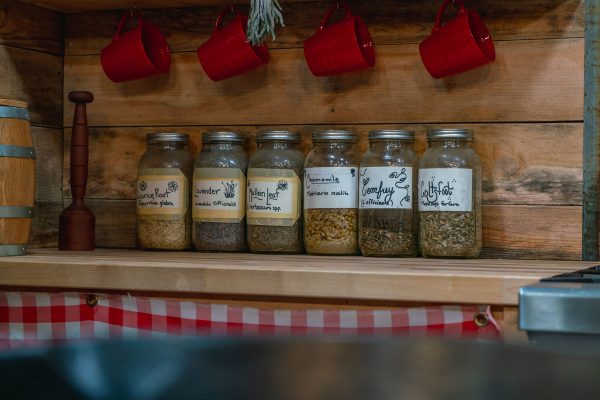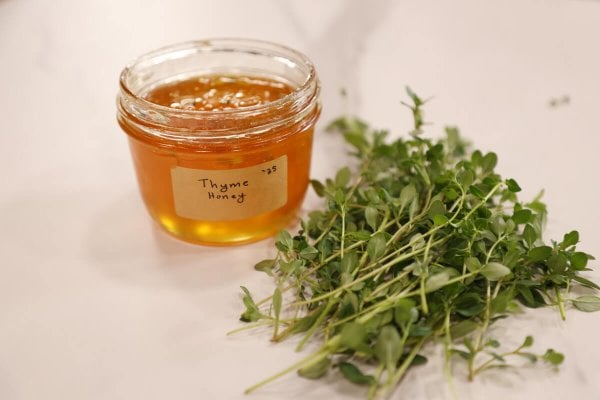







Freezing milk for long-term preservation hasn’t always been possible, or the best solution. It only lasts a few months in the freezer, but I’m excited about freeze dried milk which can last up to 20 years on the shelf! Whether you’re wondering how to freeze milk or make freeze dried milk, this post is for you!

We’ve talked a lot about processing raw milk, raw milk and the different stages it goes through, plus I’ve shared with you how to make homemade butter (3 different ways!), and I’ve also shown you our new freeze dryer where we turned fresh eggs into freeze dried eggs.
In this post (and video) I’m sharing with you two more forms of milk preservation that our family uses and loves. Plus, if you watch the video below until the end, you’ll find out what my very favorite thing to freeze dry is!
Milk Preservation Methods
Historically, if you had a lot of excess milk, you would make a lot of cultured dairy such as yogurt, kefir and clabber. But those don’t leave you with sweet milk you can drink, or put in your latte! And it only lasts for a couple of weeks that way.
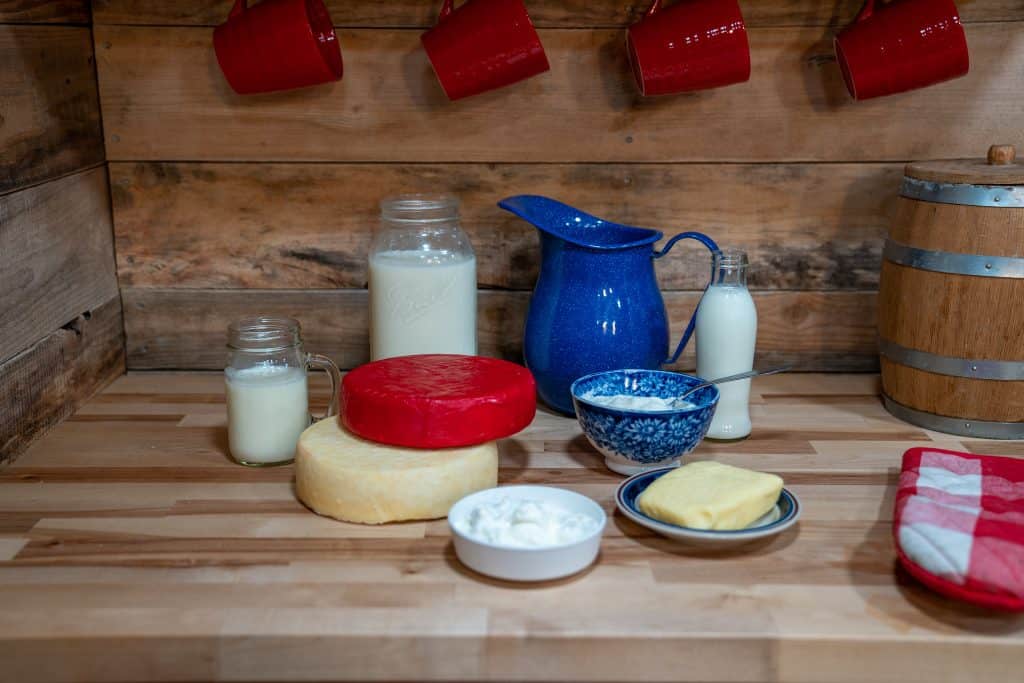
Hard Cheeses
You can turn your milk into hard cheeses, which is a great way to preserve your dairy, but then again you don’t end up with anything you can actually drink.
That leaves us with some of the methods that we have today such as canning, dehydrating, and freezing.
Canning
Canning is actually not approved by the National Center for Home Food Preservation as safe. Furthermore, when you can milk because it’s a low acid food, you have to pressure can it.
Canning milk under that type of heat actually changes the flavor and the color and it’s just not great. It tastes so different by the time you’re done.

Dehydrating
There’s the option of dehydrating, but in a home setting, you can’t dehydrate milk fast enough to keep it from attracting bacteria. Whether it’s a good bacteria that you don’t mind drinking or a bad bacteria that’s going to spoil your milk, it will have an off-taste. So we want to avoid dehydrating milk at home.
Freezing Milk
That brings us to freezing milk, which is the method that I’ve used for years. Freezing milk is very easy to do as long as you have freezer space.
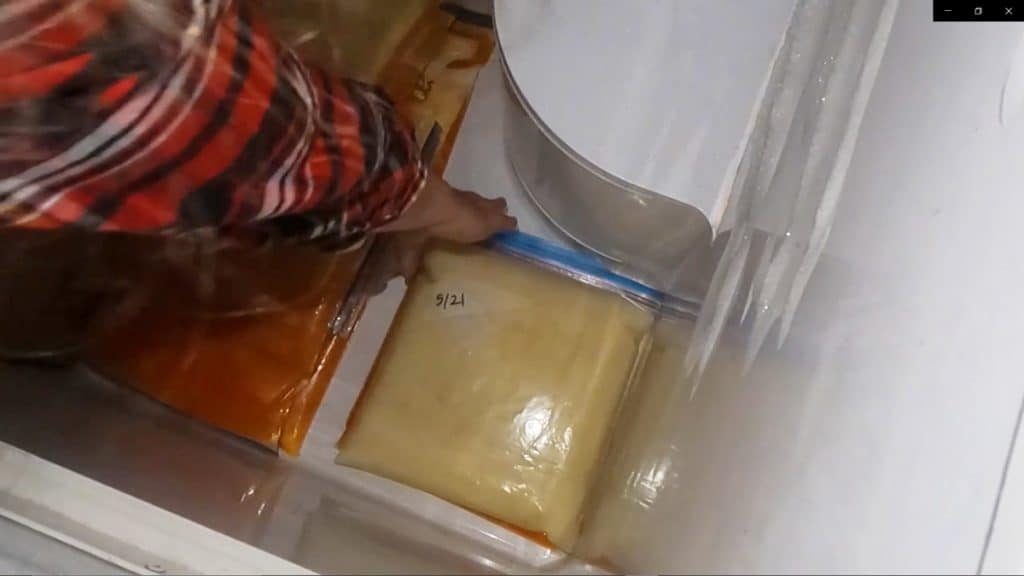
Best Container for Freezing Milk
I’ve tried freezing in all kinds of different containers, but I’ve really found that the best answer is a Ziplock bag. But not any ziptop bag, you need to go with the actual Ziplock brand. They’re the only brand that reliably holds the liquid in without leaking (take my word on this one, I’ve tried quite a few other brands and the mess is just not worth it).
If you’ve followed me for long, you know I would prefer not to store my food in plastic, especially thin plastic, but in this case, it really is the best answer.
Milk expands as it freezes (or any liquid for that matter), so using something like glass or rigid plastic for freezing milk can cause breakage and a mess in your freezer.

How to Freeze Milk
The downside of freezing milk is that the fat globules in the milk start to change texture, so when you defrost it it never comes back to the same texture. That’s why it’s best to use skimmed milk for this process, or if you’re using store-bought milk, you’ll want to use homogenized milk.
Before you fill your Ziplock bags up with the milk, be sure you label them right away with the date so you know which bag to use up first.
A gallon ziplock bag will easily hold a half-gallon of milk. The easiest way I’ve found to fill your bags is to set them into a casserole pan and carefully pour the skimmed milk into the bag.
Push out as much air as you can from the bag and seal it very well. Then place it flat into the freezer until it’s frozen solid. At this point you can move it around, stack them on end like books, or fit them into whatever freezer space you have.
How Long Can You Freeze Milk?
Milk that has been frozen correctly and stored in a deep freezer is good for about 6-9 months before the flavor begins to change. There’s no hard and fast expiration date, and how fresh your milk was when you froze it will also determine how long it will last in the freezer.
I’ve found going much past 9 months the flavor is less desirable. But if the purpose of preserving milk is simply to have an extra supply when milk production is low, then you shouldn’t need to store it much longer than 3-6 months anyhow.
This is also why we date the milk, so you know which milk in the freezer to use up first!

How to Thaw Milk
When you’re ready to defrost your milk, immediately cut it out of the bag and lay it in a casserole pan to defrost in the refrigerator. It’s not recommended to defrost at room temperature as this could cause off-flavors.
Once it’s liquid, pour it into a half-gallon glass jar, give it a good shake, and it’s ready to use for baking or for drinking.
Frozen milk that’s been thawed can tend to be slightly grainy in texture, due to the fat globules that haven’t been able to mix back into the milk. The texture can be improved if you heat it just slightly, enough to melt those fat globules, then shake it vigorously, or blend quickly with an immersion blender to mix it back together.

Freeze Dried Milk
While I’ve been freezing milk for a few years now, I’m so excited about this new form of milk preservation we’ve been able to do thanks to our Harvest Right Freeze Dryer!
Freeze dried milk is the most delicious preserved milk I’ve ever tasted! There’s virtually no flavor or texture difference after it’s been freeze dried and reconstituted. I can drink it straight, add it to my morning latte, or use it in baking and it’s just as good as our raw milk fresh from the cow.
And, the cost of running the freeze dryer is low, comparable to paying for the daily cost of running a freezer.
Freeze drying is quickly become one of my favorite ways to preserve. In addition to milk, we like to freeze dry berries, freeze dry corn, freeze dry yogurt, and much more. There aren’t many foods that cannot be freeze dried.
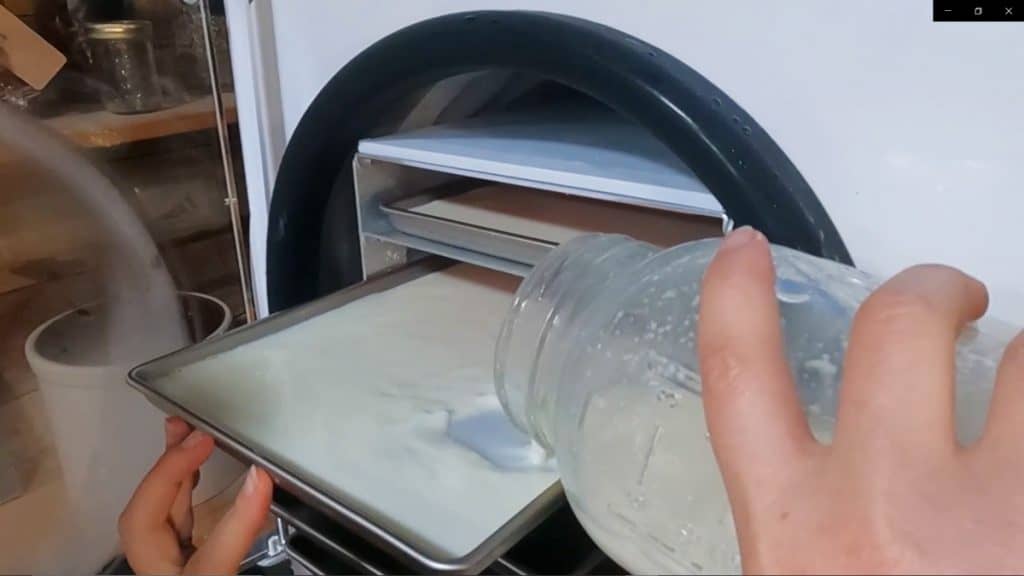
How to Freeze Dry Milk
Take fresh raw milk (or store-bought milk), give it a good shake, and pour it into your freeze dryer trays, filling them until they’re about half full. There’s no need to pre-freeze the milk, but don’t overfill the trays! Each of my trays holds about 1 quart of milk.
Slide each tray back into the freeze dryer, put the insulating cover in place, close the door, lock down the pump and press start.

Once your machine is running, you’ll then need to select the “Not Frozen” button since the milk is not yet frozen. This will first freeze the milk before the freeze drying process starts. You’ll need to come back once the milk is frozen and run it through the freeze drying process.
After it’s freeze dried (this takes about 24 hours), that’s when it’s ready to come out of the freeze dryer to be packaged up for long-term storage.
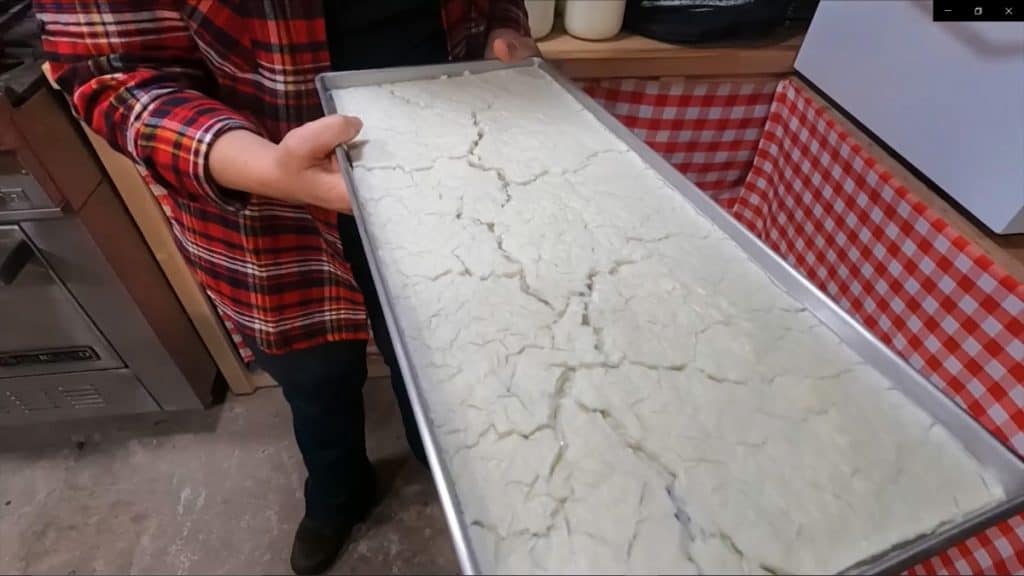
You can simply crumble the milk with your fingers, then fill up half-gallon jars and vacuum seal them, or store the milk powder in Mylar bags with an oxygen absorber.
Freeze dried milk powder is shelf stable for 20-25 years, holding onto 90-95% of it’s nutritional value.
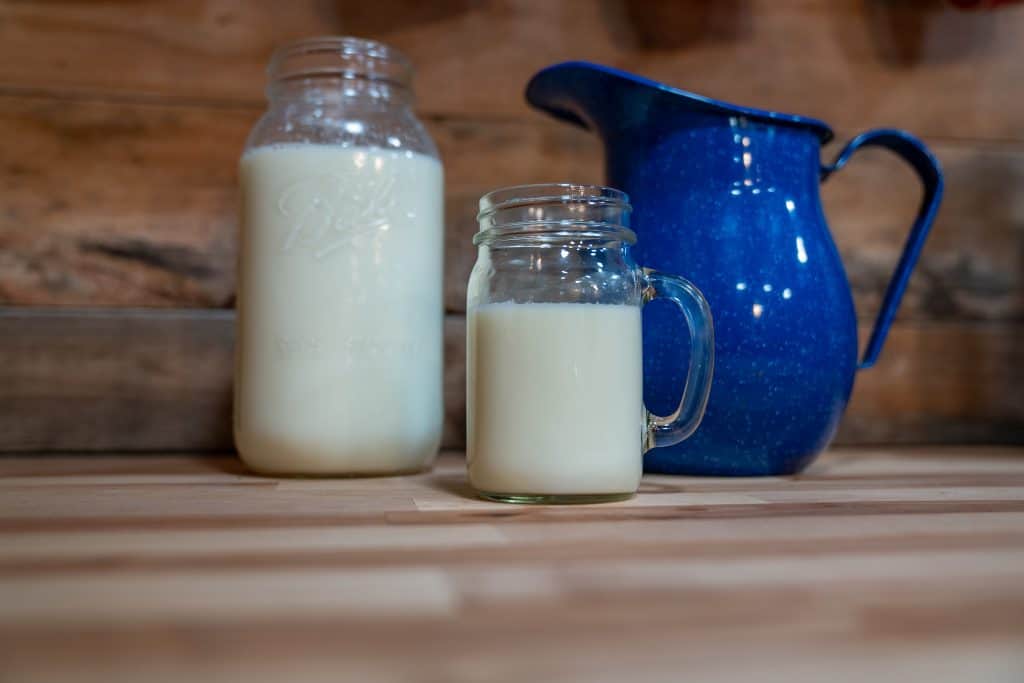
How to Use Freeze Dried Milk
To use your freeze dried milk, reconstitute it at a 1:1 ratio (by volume) of water to freeze dried milk powder.
I like to fill up a pint-sized jar with powdered milk, then add water to the top of the jar. Allow it to sit for just a few minutes before capping the jar and giving it a good shake.
Because milk tastes best when it’s cold, straight out of the refrigerator, you may want to place it in the fridge for about 20 minutes or so.

The Abundant Pantry: Freeze Drying Masterclass
If you are ready to take your freeze drying skills to the next level, you don’t want to miss my Freeze Drying Masterclass. This class was designed to be taken independently or as a companion to my book Freeze Drying the Harvest. In this online course, you will receive:
- 70+ detailed video lessons, including step-by-step setup instructions and complete batch walkthroughs for fruit, veggies, meat, meals, liquids, living food, desserts and more!
- 24/7 Lifetime access! Watch over and over again, anytime!
- 166 Page Class workbook that includes pre-treatment instructions, rehydration charts and full recipes
- Complete the troubleshooting section to confidently navigate any errors
By the time you finish this class, you will be filling your pantry with nutrient-dense, delicious freeze dried fruit, veggies, milk, eggs, meat, meals (and more) like a pro. Enroll today and receive instant access!












